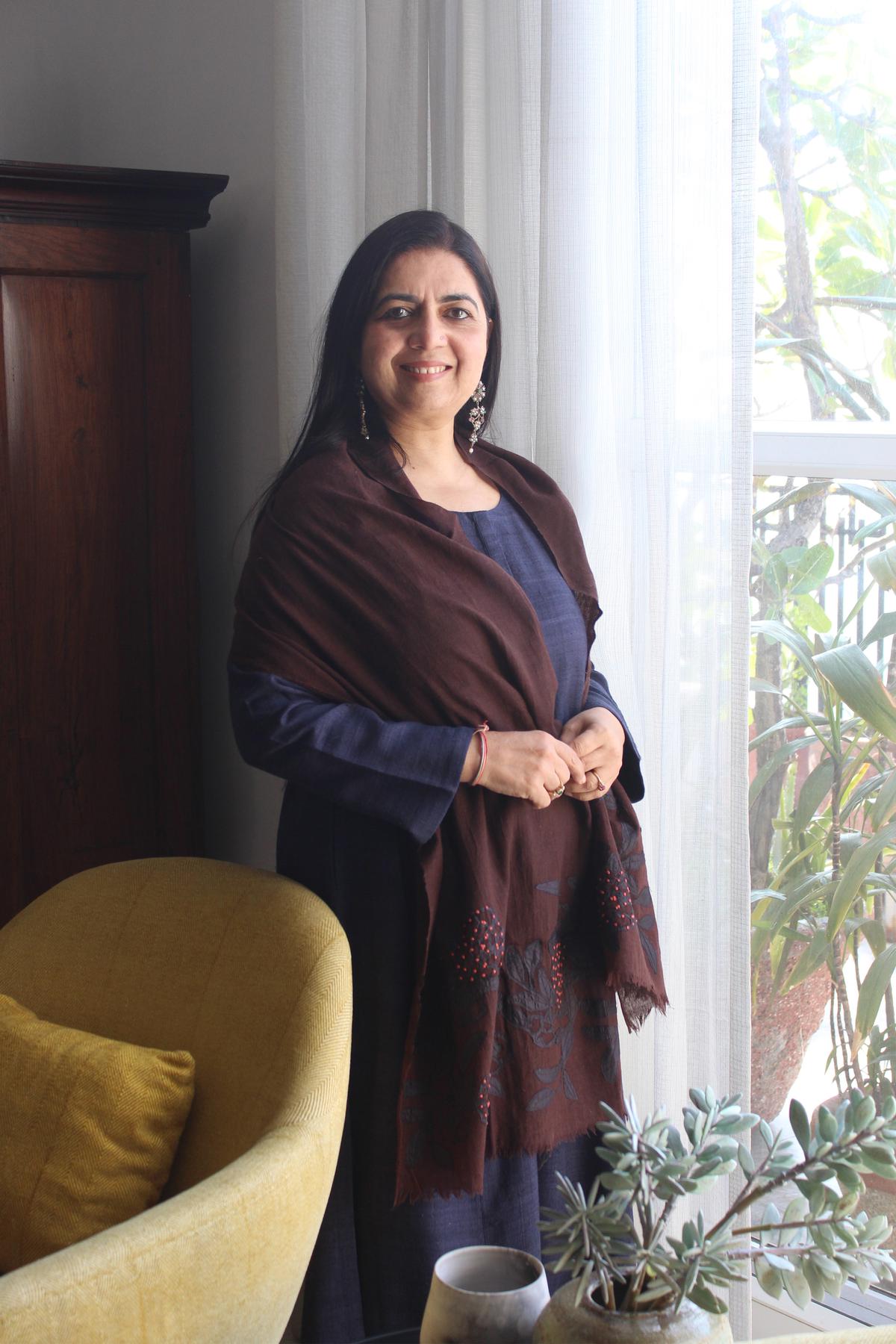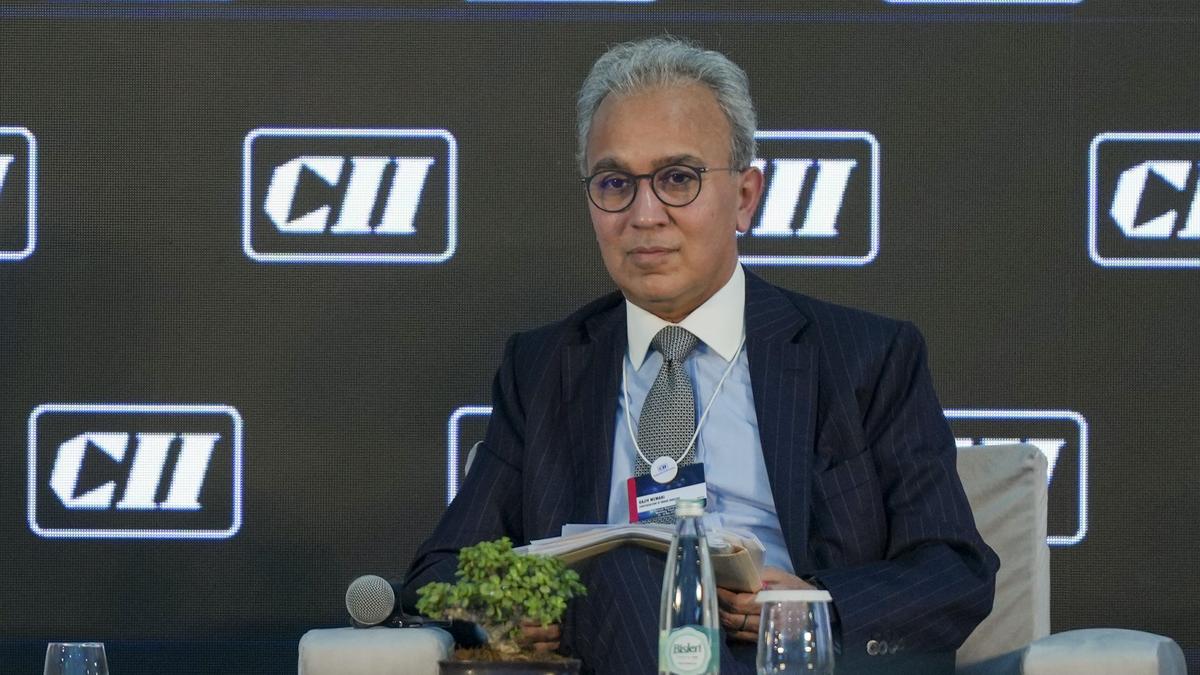The co-founder of lifestyle brand Shades of India talks about textured runners and finding inspiration in the garden this season
The co-founder of lifestyle brand Shades of India talks about textured runners and finding inspiration in the garden this season
Just talking to Delhi-based designer Mandeep Nagi makes you want to rush off to the garden and snip up bits of bamboo and twist slender vines around a napkin for an unusual table accompaniment. Of course, the backdrop would be a Shades of India runner: from rustic jute and laser-cut bunches of suede to napkin ties fashioned like leaves next to a metallic moon embroidered on a runner of black and white stripes, their collections exude an earthy yet sophisticated sensibility. Names like Mud Gold sum up the feeling: you smell the earth after rain and revel in the glitter of gold dust on ash.
Nagi, who has hotel chains and even a former Indian president as client, hardly designs by the book. She’s a self-confessed organic-trotter, whose gorgeous ensembles validate a deliberate method to her madness. We talk to Nagi, co-founder and design director at Shades of India, about their recently launched Tablescapes Collection under their homeware label Cedar.
Tablescapes sound like landscapes, and this seems to be the crux of what you do on a table — create mini landscapes. How do you create your settings?
To me, creating table settings these days is more about being organic and wild, rather than all metal and glass and shine. I’d rather see a table that’s naturally beautiful with handmade bread, cheese and fruits — something that I’ve done myself. I use materials that are sustainable and organic. I have a small garden with bougainvillea, so for me that brings a lot of cheer to put something fresh on the table. I like to do small things that are easily accessible — even if I cut a twig with a pink flower. I constantly make use of dried leaves and flowers for my napkin ties. Eventually, everything falls into place.
Is there an Indian influence in your table settings? How long does it take you to set a table?
When I set a table it’s important for me to mix and match different elements, inspired by old and new. A thali, a nice textured runner or table napkin. I don’t like anything too contemporary or too classic. The combinations can be endless. If I am preparing the table for a party, I use a lot of wooden bowls, glasses and some table linen. It takes me about 20 minutes to set a table.
Tiara napkin, Leaf napkin ties and Orion Circle runner
Can you list the number of accessories for your ideal table setting?
I start with a runner, then a circular placemat for every plate. I have very many shapes and sizes of bowls, collected from my travels. If it’s not a sit-down meal, I put together different varieties of colourful foods. Lots of candles. I don’t use conventional flowers but use bunches of wild flowers and twigs. I pre-arrange the cutlery in napkins, tie and place them in a bowl. I like to lay out interesting handmade glasses. In all, it’s a hotchpotch!
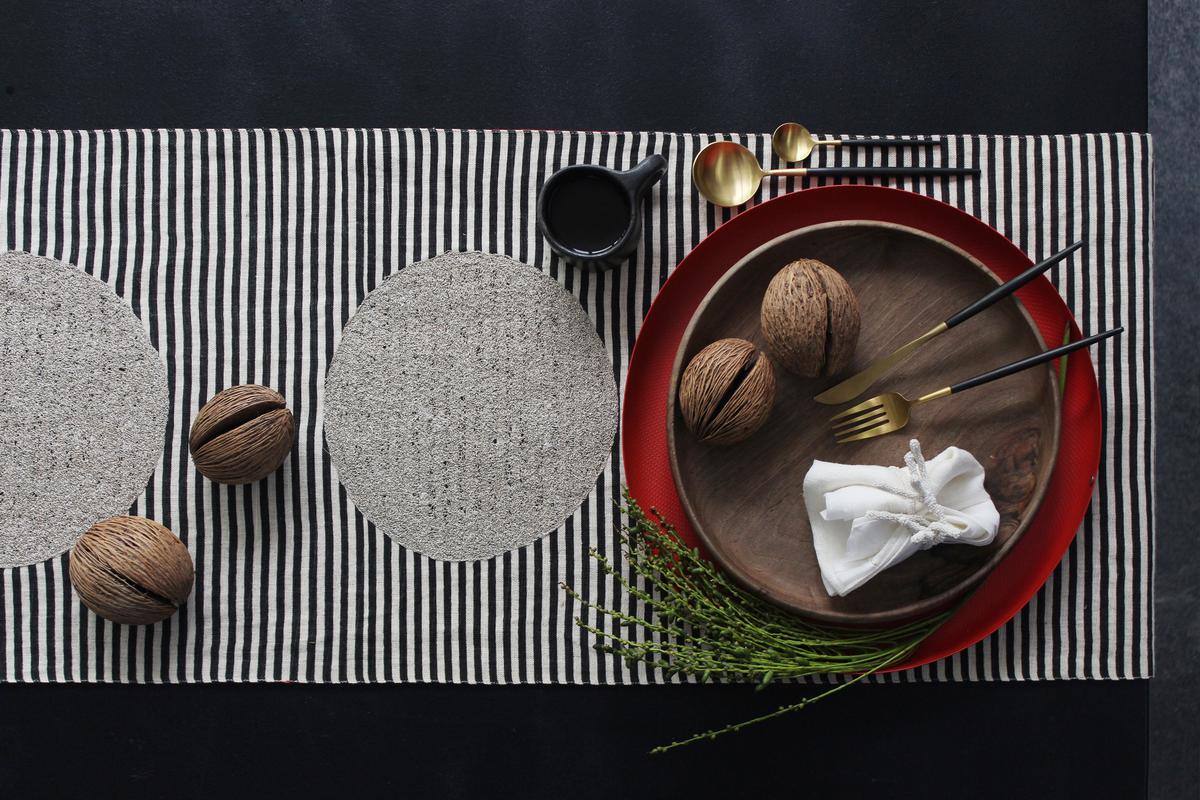
Moon Stripe runner
Tell us about the design of runners in this collection — in particular the Moon Stripe, Cinnabar and the Mud Gold runners. Are they limited editions?
The Moon Stripe is made of hand-stitched linen, which is then hand printed. We used gold zari embroidery to create the metallic moon shape. There are just 20 to 25 in this collection. The Cinnabar uses jute for that special loopy texture. The Mud Gold runner is made with suede that is laser-cut lace foiled with gold stitched concentrically in the centre — it looks like a bunch of lights. If you live in a minimalist house, it’s the one thing that’s special in the evening: almost like an art piece that you put on the table.
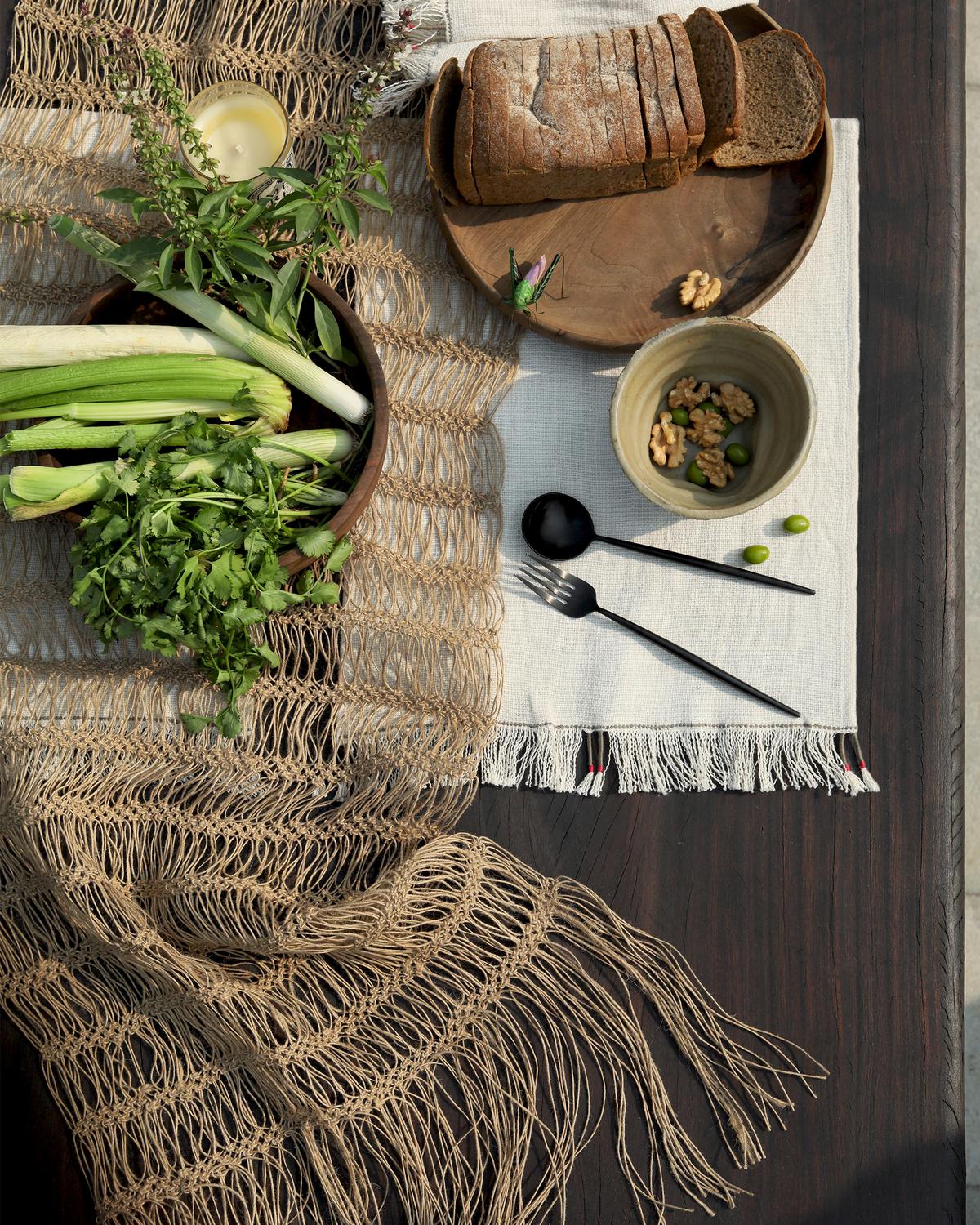
Cinnabar runner
Since you design garments, how much of the ideation for your table accessories comes from what you do for women’s wear?
Cross pollination happens all the time. For instance, take the Mud Gold — we sold cushions of the same texture earlier. And we decided to make a runner. Now we are in the process of using the same texture for a garment.
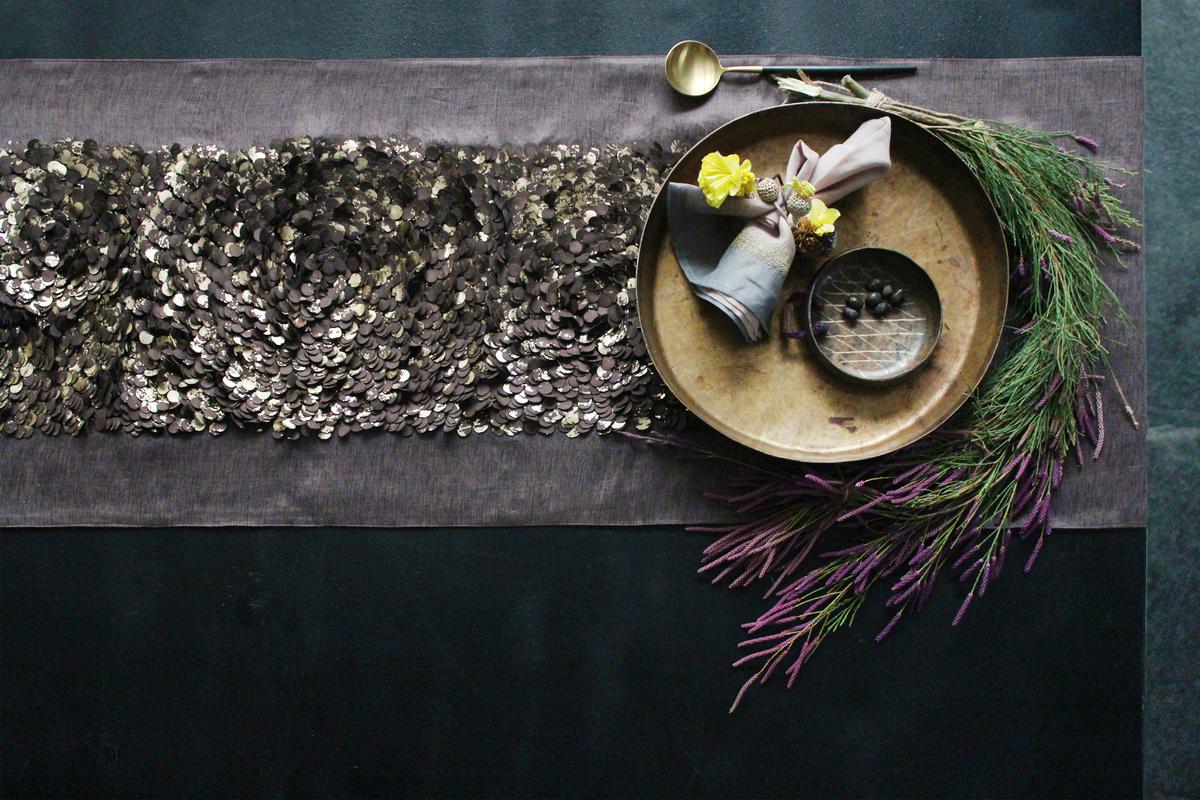
Mud Gold runner, Eden napkin and Flores napkin tie
Can you talk about your experience of design through COVID-19, and what you found emerging as new ways of living?
To me, what emerged were smaller settings that you can do up by yourself, and more meaningful ones. Instead of a lot of sourcing, we started using items that were easy and available. COVID-19 has also taught us to upcycle many things. You can introduce an old craft plate, rather than buy new crockery. These kinds of settings tend to be more personalised.
What is a popular table trend this season?
More tweedy textures on the table. More exploration of textiles that make you want to discover what it is. Many people use raw silk colours. I believe the more you use shadows and textures in the design of runners, the more you can bring a third dimension to the table.
The writer is a brand strategist with a background in design from SAIC and NID.


